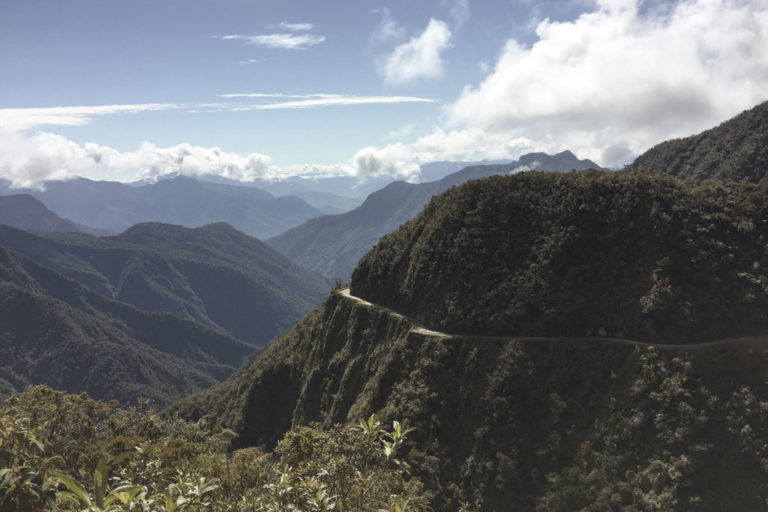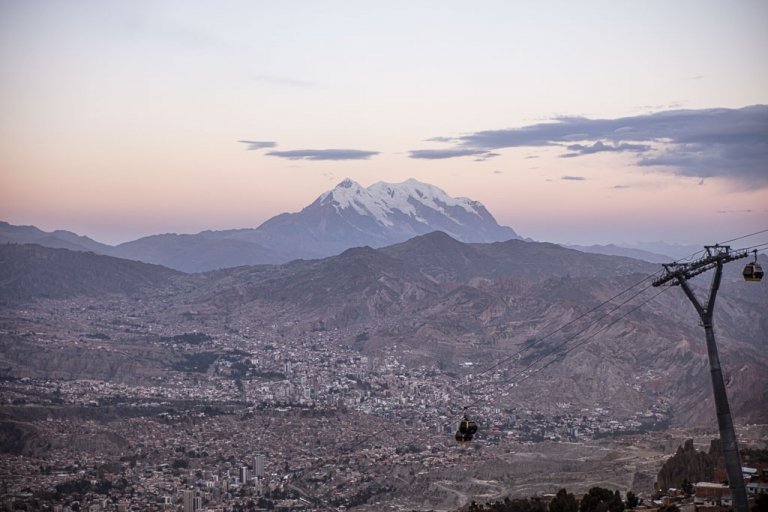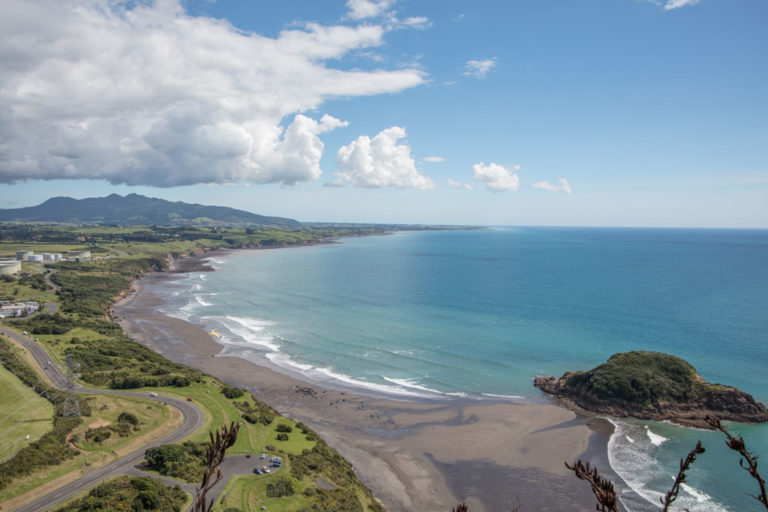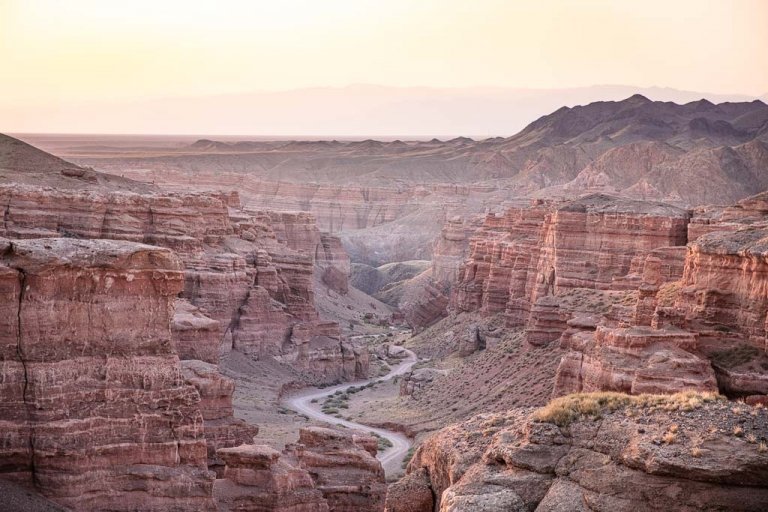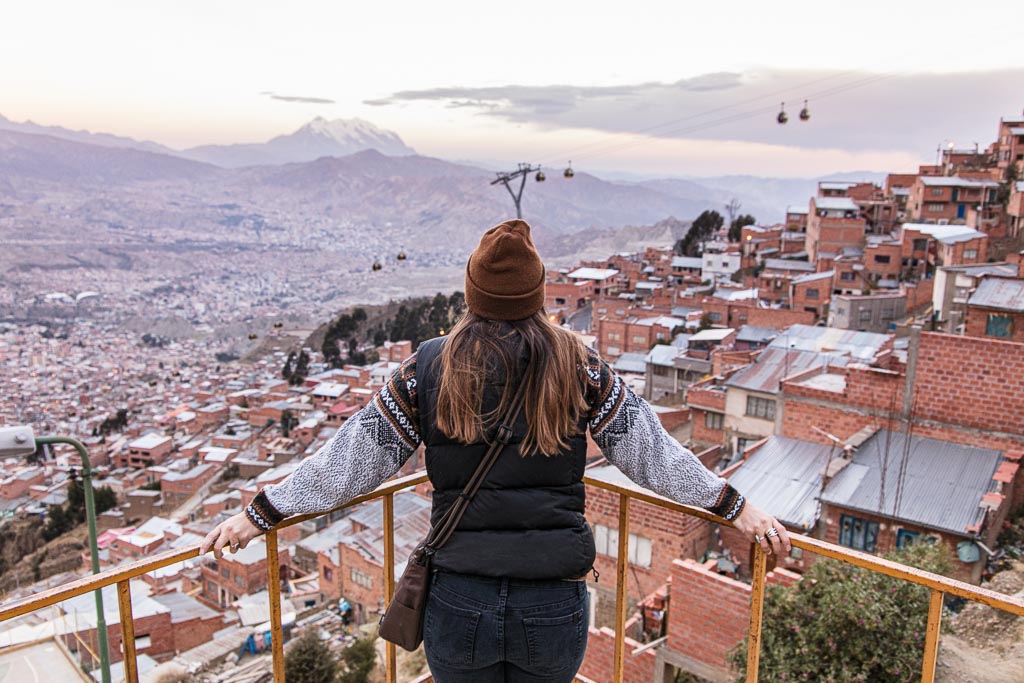
La Paz, Bolivia Travel Guide + 12 Things To Do In La Paz
Updated February 2024, La Paz, Bolivia Travel Guide + 12 Things To Do In La Paz was originally published in June 2020
On my first trip to South America, we chatted with countless other backpackers as my best friend and I made our way across Bolivia, Peru, and then later after she left, Ecuador for me. The vast majority of these people had already been to La Paz, lamenting about how much they didn’t like it.
We actually flew straight in and started from La Paz. We landed at about 5 am and were welcomed into the city by a gorgeous sunrise as we took a taxi down from the airport into downtown La Paz.
I much preferred La Paz to say Lima. There was just something about its mixture of indigenous tradition, Andean Baroque architecture, wild mountains surrounding, and it’s rough around the edges persona that lured me in.
Of course, La Paz has its downside and problems too, is polluted with exhaust, arid, and riddled with constant strikes and protests among other things. But if you don’t mind thrusting yourself into chaos, La Paz will be a delight.
See 10 Epic Photos To Make You Want To Visit Bolivia
Need Travel Insurance and Evacuation Services for Bolivia?
Start shopping for travel insurance plans over at IATI Insurance. Readers of the Adventures of Nicole get a 5% discount off your plan.
The Adventures of Nicole partners with Global Rescue to offer the world’s leading medical evacuation and security advisory services. To travel with peace of mind, shop evacuation coverage at Global Rescue.
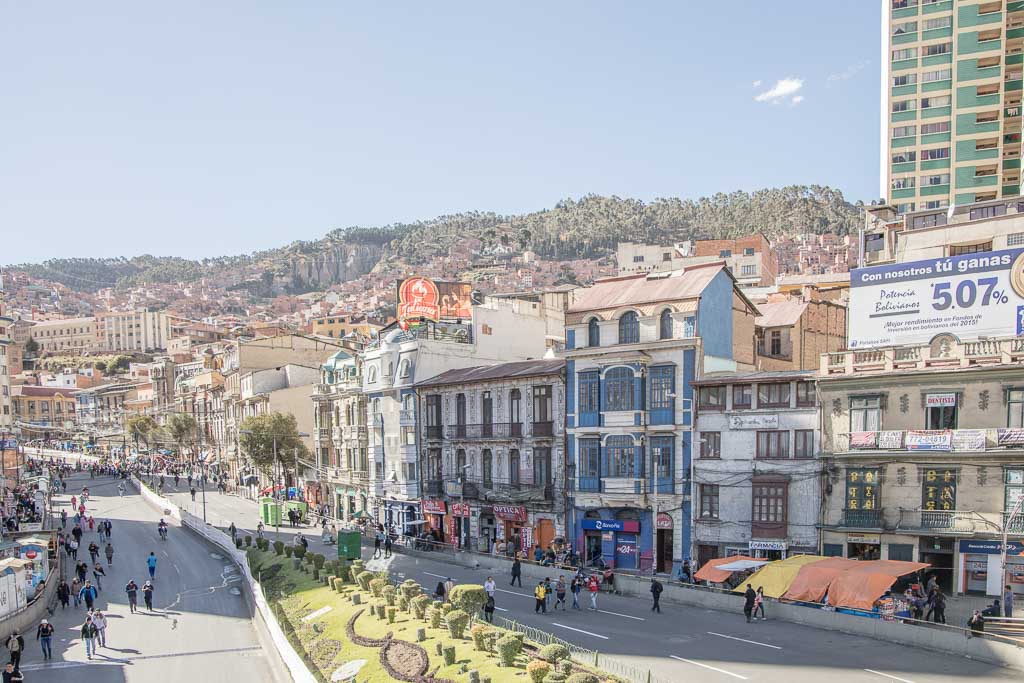
A Quick History Of La Paz
La Paz originally existed as a settlement called Laja, inhabited by the Aymara. In 1548 the Spaniard conquistador Alonzo de Mendoza founded the city in Laja. A short period of time later the city of La Paz was relocated to Río Choqueyapu, 36 kilometers away.
The next two centuries have a tumultuous history under the Spanish. In 1809 an uprising finally lead to the liberation of Bolivia from Spanish control and gained independence.
Things To Do In La Paz
Take a Walking Tour of La Paz
One of the best ways to learn about a city, understand its history, and to just get to know it a bit better is to take a locally led walking tour. If you’re looking to join a city tour of La Paz, I recommend taking a Free Walking Tour of La Paz with Ronny Celi.
Mercado de las Brujas (Witches’ Market)
I think the Mercado de la Brujas is a great introduction to La Paz and Aymara culture, for those just arriving into the city. The market is comprised of shops run by Aymara Yatiri (a local witch doctor) selling goods mainly used in traditional Aymara rituals, such as the baby llama fetuses you’ll definitely hear about that are traditionally buried under the foundations of homes as an offering to Pachamama. Amulets, dried frogs, medicinal plants, and potions can be found scattered throughout the market.
Chualluma
Chualluma is a neighborhood in La Paz that has recently become well known after being painted vibrant colors between March and July 2019.
I visited before this, so I did not get to see the colorful buildings for myself, but next time in La Paz I definitely plan to stop on by. Since I did not visit myself, I urge you to read more about visiting Chualluma on this post by the Partying Traveler (he’s actually how I first got wind of Chualluma because we follow each other on Instagram).
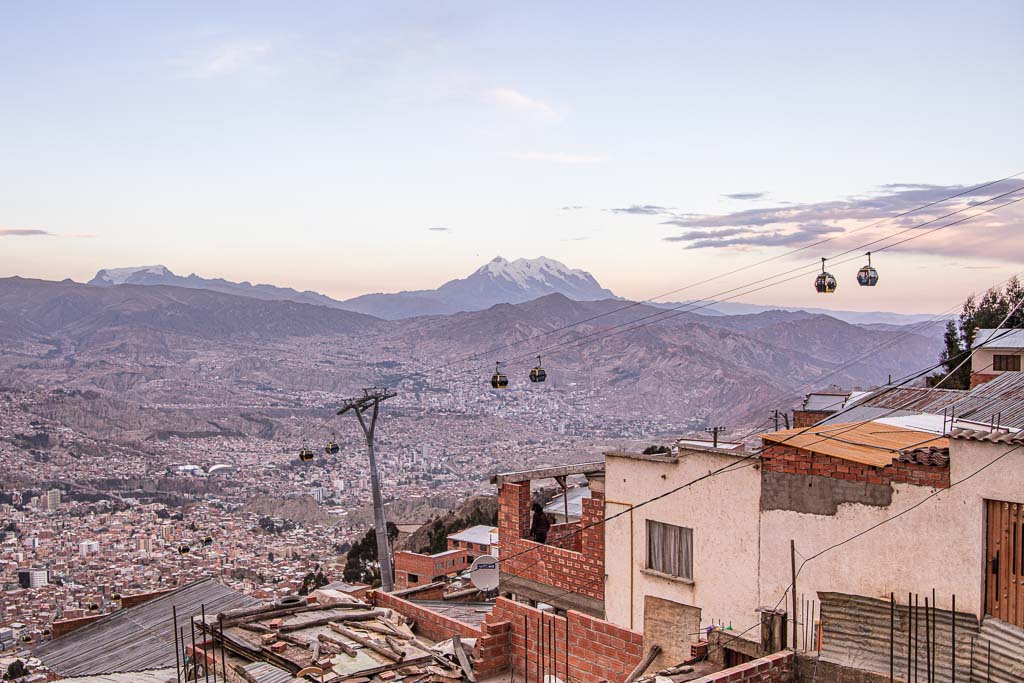
Ride The Mi Teleferico
The Mi Teleferico is La Paz’s cable car system, consisting of over 25 stations and 10 lines, which is likely one of the most beautiful public transit systems in the world. We found this to be a handy way to move about the city, plus get amazing views while you’re transiting.
Mi Tereferco tickets: Initial fare is B$ 3
Casco Viejo (Old Town)
Casco Viejo is La Paz’s old town, centered around lively Plaza Murillo, named after Bolivian hero Pedro Murillo, who played a key role in Bolivia’s independence.
Several important buildings are located in the plaza, such as the Presidential Palace, National Congress of Bolivia, and the Cathedral of La Paz.
Cholita Wrestling
Cholita, until recently was a racial slur directed toward indigenous Bolivian women. After an indigenous rights revolution lead by president Evo Morales, bringing pride to the traditional garb of the local women.
In the mid-2000s women’s interest in wrestling skyrocketed, many of which were domestic violence survivors. Eventually, this led to theatrical wrestling shows (similar to WWE) being put on.
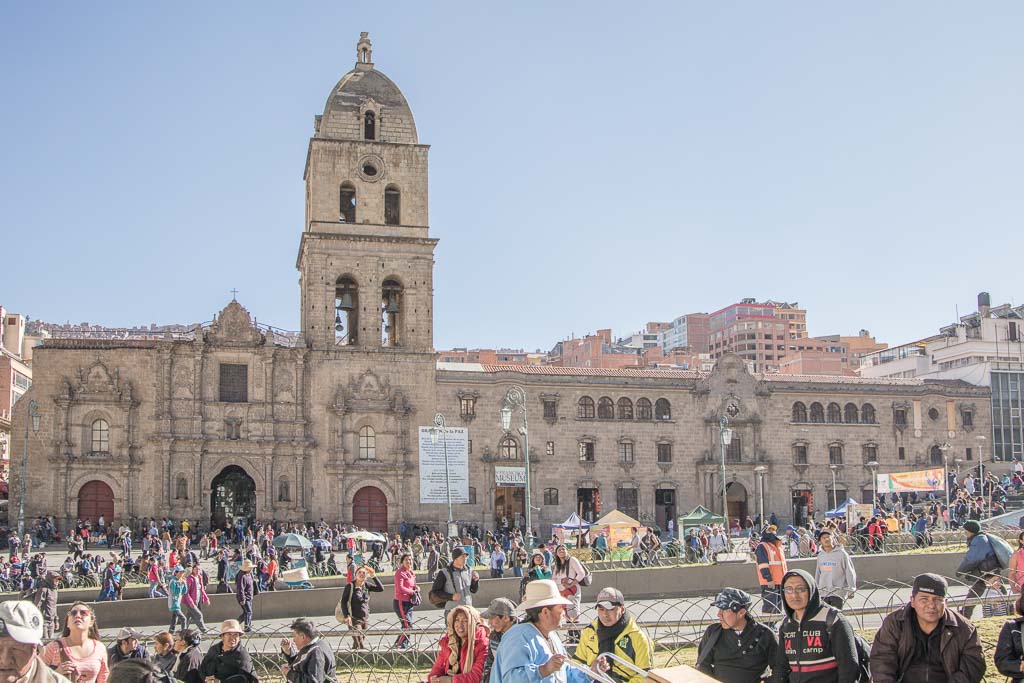
San Francisco Basilica
Founded in 1548 and renovated from 1743-1772 following a collapse after a heavy snowfall, the San Francisco Basilica is a La Paz landmark. Don’t miss the adjacent Museo San Francisco.
The plaza out front is a common site of rallies and protests in La Paz (we found this out when on our first evening trying to get a taxi from our accommodation to the bus station and received a resounding NO!).
San Francisco Basilica Museum entrance: B$ 20
Cementario General
Establishment in 1826, the Cementerio General, located between the city center and El Alto is a unique necropolis. It’s almost a city within a city, with human remains stored in apartment-like compartments for 10 years, giving families time to sort out a burial site or have the body cremated.
In the 1930s due to the evergrowing population of La Paz, citizens were running out of places to bury loved ones and the Cementario General was the answer.
Calle Jaén
Calle Jaen, located just off of Plaza Morillo is a street of La Paz, lined with colorful 18th century colonial homes and several different museums. The museums include, Museo Casa de Murillo, Museo del Oro, Museo de Metales Preciosos, Museo del Litoral, Museo Costumbrista Juan de Vargas, and Museo of Instrumentos Musicales.

Souvenir Shopping At Calle Sagarnaga
Calle Sagarnaga is one of the most touristy streets, but still a must-do on a visit to La Paz. The street has catered to travelers since the 18th century. You’ll find hostels, souvenir shopping, tour agencies, and more on Calle Sagarnaga.
Parque Mirador Laikakota
This park offers some of the best panoramic views of La Paz. Parque Mirador Laikakota can easily be reached by the Mi Teleferico from downtown La Paz.
El Alto
El Alto is actually the highest metropolis in the world, and it home to La Paz’s International Airport. You can easily take the Mi Teleferico up to El Alto and explore this city in its own right. From the top, you’ll also have grand aerial views of La Paz and the surrounding mountains.
Heading off to Salar de Uyuni? Read my best tips and tricks before visiting the Salt Flats
Outside La Paz
Valley de la Luna (Moon Valley)
Named after is lunar-like appearance, Valle de la Luna is one of La Paz’s most popular day trips outside the city. It was on our shortlist of places we wanted to visit in La Paz, but we never made it. As I didn’t visit on my own right, go check out more info over on An Adventurous World and learn how to get there on your own.
Tiahuanaco
Another popular La Paz day trip is to the Pre-Columbian archaeological site of Tiahuanaco. If you’re an avid history buff you’ll definitely enjoy learning more about this lost civilization.
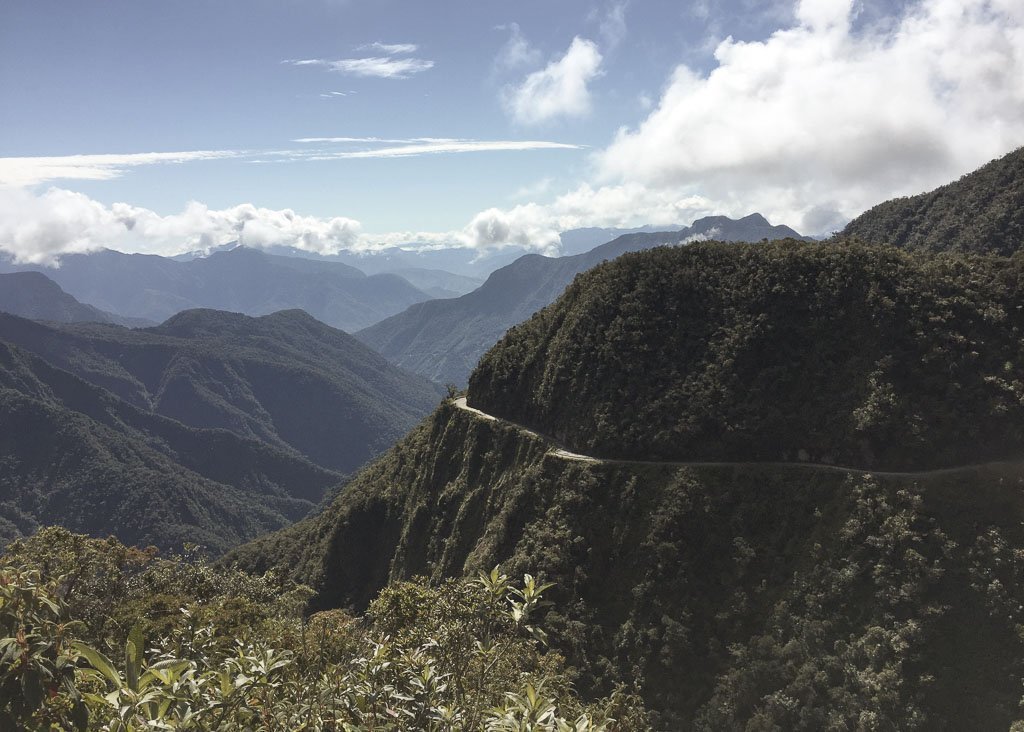
Cycle The Death Road
Being adventure junkies that started out meeting in gymnastics and graduating on to snowboarding and backcountry escapades, cycling the North Yungus Road, more commonly known as the Death Road, was a must-do on our visit to Bolivia.
The Death Road connects the high-altitude capital of La Paz to Bolivia’s lower-lying Yungus Amazonian Rainforest. If you take a cycling day trip as we did, you’ll start from La Cumbre Pass, towering at 4,650 meters. From there it’s all downhill, eventually taking you to the down of Coroico, at only 1,200 meters to end the trip.
You’ll need to pack layers for this trip as it was snowing at the top of the pass and we had to dodge patches of ice on the road, but by the time we reached the bottom, we were in t-shirts and shorts.
The Death Road is no small feat though, several tourists have died over the years cycling down it. I recommend only going with a reputable company.
Read all about it: Cycling Bolivia’s Death Road
Book your Death Road cycling trip here!
Summit Huayna Potosí
No small feat by any means, Huayna Potosi is considered to be among the easier 6,000+ meter peaks in the world. Huayna Potosi is the most popular summit in all of Bolivia thanks to its proximity to the city.
There are several routes to the summit, the most popular and easiest being a two-stage climb that is usually completed in 8-12 hours.
It’s recommended to have spent 3-6 days in La Paz or at high-altitude prior to departing on this climb. Even taking the easy route up is no small feat, and if you’re not an experienced mountaineer you should definitely hire a guide.
Our Airbnb host in La Paz on our second visit back to the city had climbed it (as well as a number of other high altitude peaks) and told us about it. If you want to read up about an experience climbing Huayna Potosi, check out this post on Czick on the Road.
Book a guided expedition up Huayna Potosi here
Valle de las Animas
This eroded valley is full of needle-like rock formations that reminded early visitors of petrified souls, hence the name meaning ‘Valley of the Spirits’.
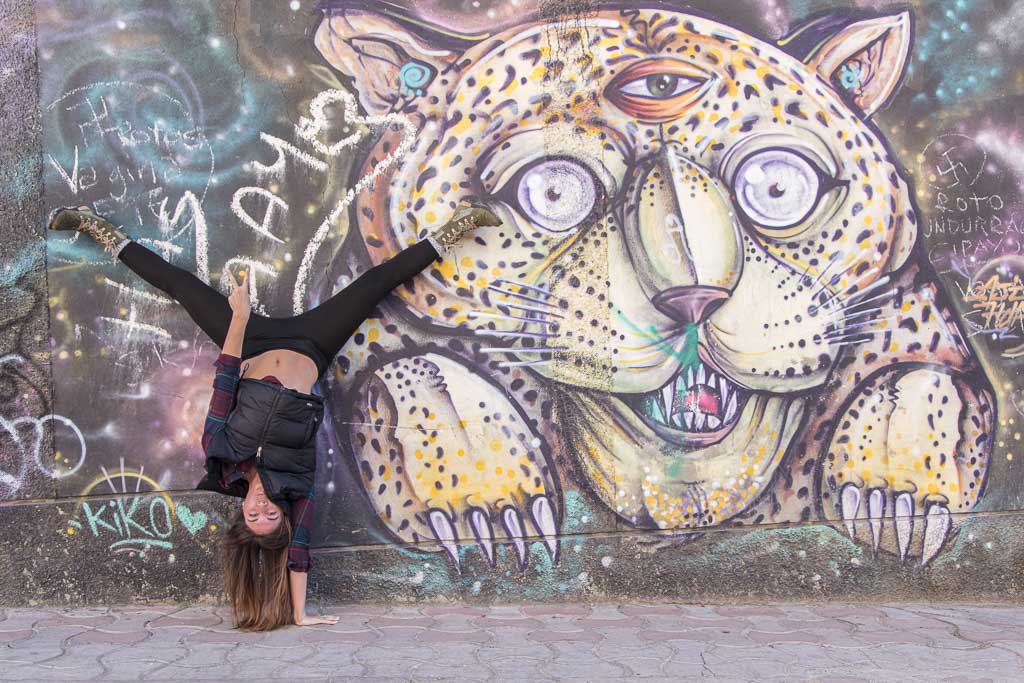
Where To Sleep In La Paz
Budget
St. Peter’s LLama Hostel
| Booking.com |
Midrange
Madero Hotel & Suites
| Booking.com |
Splurge
Hotel Mitru Sur
| Booking.com | Hotels.com |

Have Any Questions About Visiting La Paz, Bolivia?
Ask in the comments section below. Grab a copy of Bradt’s Bolivia to help you start planning for La Paz and beyond.
More Posts from Bolivia:
